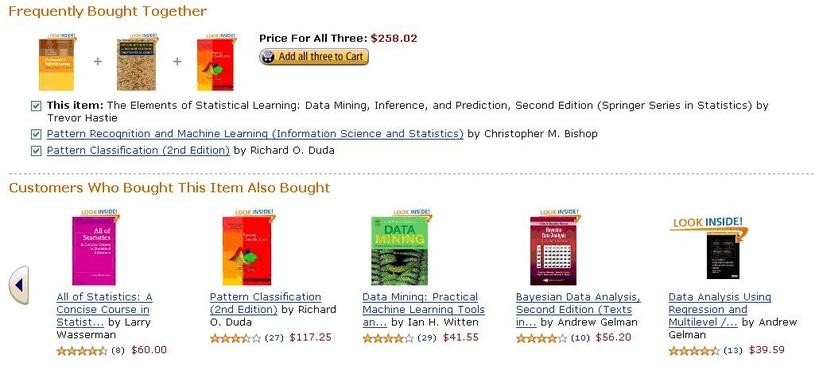What is Database Marketing? How to Create an Effective Database Marketing Strategy?
Think of a situation like this: you work for a corporation that deals with appliances and mobile equipment. This week, you get some new items landing at your shops, and you plan to launch an e-mail marketing plan to residents around your chain stores to spread the news.
Now you wonder: is mailing the most efficient marketing approach for everyone? And what if you want to target consumers having a real interest in technology and gadgets but dwell in places far beyond your vicinity?
You may wish to have a button on a computer that can automatically create a long list of potential customers in these faraway places who could be buying your products.
This is where Database Marketing kicks in. It includes things like data in real-time, actionable insights, complete pictures of consumers’ behaviors; strategies for customized engagement; omnichannel campaigns.
They can sound really complex, but for successful sales and marketing expansion, they are also important. And the secret to all of them is Database Marketing. So what is Database Marketing, and why is it significant? Let’s find out now!
What is Database Marketing?

Let’s start with a rudimentary Database Marketing definition.
Database Marketing is a type of direct marketing that employs consumers’ databases to create targeted lists for personal selling and communications. Those databases contain some personal information of the consumers, such as names and addresses, contact numbers, e-mails, payment records, information requests, and all other data that may be lawfully and securely captured.
You can access such information through discount coupon application forms, sales invoices, registration forms, insurance claim papers, and consumer newsletter subscriptions.
Conventional direct marketing means making items such as brochures and catalogs, then sending them to a list of current or potential clients with the expectation that these items can evoke a favorable reaction from the receivers. However, this approach has been rendered obsolete in the era of technology.
The Database Marketing Strategy further improves this approach’s efficiency by attempting to learn which items the consumers want, which advertisements trigger a positive reaction, and then incorporating those observations through the right medium to satisfy these needs.
Why is Database Marketing important?

Let’s examine some examples we have here.
Imagine a situation like this: An OTT app manager needs a way to grasp the proportion of its frequently binge-watched customers to introduce to them a premium subscription plan.
To increase the turnover rate, they use their customer database to group their loyal, frequent watchers. After that, they send out a bulk combined e-mail offering these users a free month trial of premium (to act as an incentive to motivate them). Using data analytics, they can estimate how many targeted customers will yield Return on Investment.
So, using Database Marketing, you can group Loyal Customers and find Possible Upsells
Or, imagine a customer service person from an e-Commerce app is being delegated with cold calling. With Database Marketing in place, that person can see the information of the phone recipient automatically. Based on that information, they can determine whether the cold-calling recipient is a potential buyer or not. Also, the service rep can easily see through a customized support interface with this knowledge and respond to the recipient’s questions quicker.
In short, Database Marketing allow you to provide Personalize Customer Service
Or, imagine you are the manager of a travel app aiming to widen its service line. With a customer database, you can now reach into their consumer profile to view their purchasing habits and travel patterns before allocating resources to the initiatives. First, this endeavor is to decide whether their potential customers will book its guided trips or not. Second, it is to learn which customer types would yield a high Return on Investment.
With Database Marketing, you can know which items and services to promote to a particular audience

Or, imagine you run a food delivery app. To stay ahead of the curve and improve conversions, you need more customers ordering food on your app. You may be thinking that spamming users at any mealtime are one way to do that. However, an even better way is to anticipate which consumers are most likely to order, using customer database predictive analytics. That way, you can offer updates on which food is hot selling and promo codes to the right people at the right time, making it easier for your company to win over those customers.
See, Database Marketing helps you to predict who will buy your products and when they will do that
Let’s narrow things down a little bit. With a decent Database Marketing Strategy, you can:
- Group your customers: from the most committed, high-value clients to first-time consumers and casual users.
- Develop broad segments of consumers based on demographics, ideologies, or even personal preferences.
- Create highly tailored communications for both potential and existing clients.
- Determine the optimal time and channel for client interaction.
- Boost your marketing success by reducing spending time and resources sending campaigns to people that are reluctant to respond.
- Establish active loyalty programs that offer exclusive benefits for frequent transactions.
- Understand your customers’ experience with your brand.
- Enhance the customer experience by offering customized support services.
What are Database Marketing’s setbacks?
Database Marketing is tremendously beneficial, but it still has some challenges. Advertisers need to consider the obstacles in order to implement promotion campaigns effectively.
Look out for these problems in Database Marketing:
-
Deterioration of Data. Your profile becomes out of date if a customer quits jobs, receives a raise, gets to a higher status quo, transfers to a different address, changes their name, and gets a second e-mail address. Basically, any life transitions could render your data obsolete. Per month, a well-managed database declines at an average of 2-3 percent, which means that a third of the data might be inaccurate in only a year span. To minimize data degradation, you may want to concentrate on information that is least likely to change (for example, name and phone number rather than company e-mail)
-
Precision of Details: Customers will not always provide accurate data. Besides, typos, handwriting readability, or missing details can negatively influence the accuracy of your Database.
-
Acting in a timely fashion on customer data: Collecting and reviewing details from customers is just the first stage. To hit on a customer’s curiosity in your company, you have to move fast enough. Otherwise, your data will become out-dated.
How to Create an effective Database Marketing Strategy?
The critical advantage of Database Marketing is that it encourages a company to stay connected with its consumers to make sure that they are engaging with the brand one-on-one. Needless to say, understanding clients’ desires, wishes, expectations, patterns, and even potential habits help the brand make them feel heard and valued, without wasting their time with meaningless messages.
To this end, you need to understand how to get started and create your own Database Marketing Strategy to meet your needs. You may want to begin with the following steps.
1. Identify the main group

Consider these factors: How old are your main targeted customers? What is their amount of income? What is the job title? Where are they living? What are they actively involved in? What else are they purchasing?
Once you get these criteria, you may create your product with a comprehensive perfect customer profile. Then, you use this profile to assess what kind of details is needed. Finally, include them in your Database.
2. Collaborate with other departments

Marketing, distribution, and customer service are also in close touch with clients and prospects. To be effective, you get to figure out what data does each team needs?
3. Find the right platform

Customer insights will not be of any use to anyone if the people in your company cannot access it. Therefore, it is vitally important to choose a platform that facilitates the sharing of information process. Also, you need to organize consumer information to fit the various categories of goods or services.
4. Gather Customer Database resources
Database Marketing begins with… you guess it … data. The more helpful information obtained, the more successful the initiative is.

These data come from a multitude of places, both internally and externally. For example, since finance and insurance agencies already need to obtain name, address, and other sales information, it takes no additional time to keep the information in the Database. More data may come from customer service - the department that keeps track of all their customer interactions. Meanwhile, extra customer data are generated by marketing and sales leads.
Although it is possible to gather data on current consumers through sales, oftentimes, you primarily collect (buy) data on potential customers from third parties. Different nations have different regulations that regulate what data can and can not be sold, mostly narrowing it to names, locations, phone numbers, and specific characteristics, perhaps. A great number of companies will capitalize on this; others may have to conform to contracts with their customers that prohibit them from doing so.
These data may include:
-
Acquisition information: when and how the customer first came to your site/app, from which channel/affiliate, which advertising campaign they respond to, etc.
-
Demographic data: Age, ethnicity, marital/family status, schooling, address, etc.
-
Website/app usage history: which sites do they view, what is the number of visits, what are the items clicked or games played, what are the features used, etc. (including activity reported before login or first buy)
-
History of purchase/spending: how many times they have purchased from your site, what is the number of purchased items (total items and average items purchased each time), how much do purchased items costs, what is the average expenditure per one purchase; what are the dates/intervals between each purchase.
-
Campaign response history: how often consumers interact with your campaigns, how and how much they have reacted, what kinds of campaigns they have responded to, and through which channels.
-
Loyalty program information: what is the loyalty level received, the number of points received, redeemed discounts, etc.
-
Customer surveys and questionnaires: what are the customer survey results and how long it takes the customer to complete a survey.
-
Collection of interaction: details of all communications between a client and the company
-
Location data: geo positions reported from the mobile devices of the customer
-
Activity in social media: what are the often discussed subjects and brand names, what are your app reviews, your visitors’ profile info, etc.
-
Third-party data analytics details: what are the other websites browsed, advertisements clicked, purchase provoking data, socioeconomic indicators, etc.
It is necessary to merge the different data sources in such a way that the information is clean (free of mistakes), up-to-date, and properly connected to each particular customer. Each of these criteria can present difficulties, especially the need to align all customer information from disparate sources with a unique customer identifier. Only if all data points are correctly gathered and connected to individual customers can you achieve Database Marketing goals.
Fortunately, over the last few years, technology has proven to be of tremendous help in all of these sectors. A reality that renders it practical, maybe even compulsory, for corporations to deploy marketing tools for databases and enjoy the rewards.
5. Maintain up-to-date and back-up information

It takes lots of time and resources to create a consumer database. You do not want to waste it all just because of some power failures and technological bugs. This is where CRM software or a customer data platform will help you.
Also, CRM software can synchronize profiles periodically, for example: when consumers access new details. By integrating with your software and upgrading each contact as they search your website with interaction data, online tools can protect your Database against decay.
Check out: 15+ Best CRM For Small Business
6. Value consumer confidentiality

Social media has greatly facilitated the process of getting detailed insights into your customers’ hobbies, opinions, and life changes. Successful customization is about presenting an informed user with a tailored message, not proving how much personal knowledge you have.
Besides, there is nothing more important than your customer trust. Your effort will be all for naught if someday, they wake up and see all their private information online.
7. Create segmentation

Once you’ve built your Database, you can start with some basic user segmentation. For example, campaigns designed primarily for first-time customers or potential clients, or customized campaigns for users in your loyalty scheme.
There are several levels of market segmentation; each one refers to a company’s strategy to support, sell, and locate its product to the target audience or its consumers, respectively.
Mass Marketing
Mass Marketing approach relies on the whole consumer segment of potential buyers instead of concentrating on a selected group of consumers. Baygon cockroach spray or Mortein mosquito repellent coils are examples of a Mass Marketing campaign that reaches all its future clients with a single advertising message.

Segment Marketing
Segment Marketing translates to a technique in which the organization splits its target audience according to their specific preferences and requirements into separate categories. The brand targets various advertisements to different segments, drawing them to the particular features of the product. This approach creates product distinction, depending on the buyers’ gender, age, earnings, and location, for clients with everyday needs and desires.
The clothing industry perfectly exemplifies the Segment Marketing Strategy. The focused clientele may be male, female, casual, trendy, and business clothing segments.

Niche Marketing
This strategy of marketing concentrates on smaller customer segmentation. Customers may like or want an item that is not entirely fulfilled by the products available on the market. As firms step forward to create highly customized products meeting their customers’ individual preferences, they offer items that only cater to certain consumer segments.
An example of a Niche Marketing category is mountain biking. Individuals interested only in mountain biking would be the target of this market segmentation. It is a Niche Market, as not every bike production corporation caters to mountain bikers. Companies that manufacture mountain bikes address the niche market of mountain bikers and accommodate their unique demands, tastes, and specifications.

Micro Marketing
Micromarketing is an even smaller marketing approach for segmentation. It caters to the characteristics of a well-defined prospective buyers’ group, such as people of a specific geographical area or a very particular lifestyle.
Luxury cars that are prohibitively priced and have excellent features such as high speed, personalized appearance, etc. are examples of niche marketing. The demand for these vehicles comes from wealthy motor enthusiasts keen on the exclusive features and have the financial resources to afford them, as these models are very costly and small in size.

Bear in mind that marketers can achieve the level of consumer micro-segmentation, or even individual-level segmentation (which is also called segment-of-one customer-marketing), by integrating different segmentation approaches. This results in highly meaningful targeted experiences in today’s marketing-saturated environment that demonstrate emotional intelligence and effectively stand out from the crowd.
Successful Database Marketing Examples
1. Amazon Database Marketing

Amazon is a perfect example of a company that has perfected ads using databases. Some may contend that Amazon does not participate in an intense content promotion (even for its B2B commodities). Still, it is evident that Amazon is very successful in exploiting and analyzing consumer data.
Amazon closely monitors what users have seen, ordered, or posted on wish lists, and also cross-references this data with what other buyers have purchased to “cross-sell” and “up-sell” its shoppers (e.g., “You may also need it too”). This tactical algorithm is sometimes referred to by database advertisers as a “recommendation engine”.
Also, Amazon is very efficient when it comes to positioning its brand.
- Multi-segment positioning: Amazon delivers a wide variety of goods and services, exploiting more than one market at the same time effectively. In total, this shopping giant has sold more than 130 million goods, attracting the needs and desires of a wide variety of consumer segments.
- Targeting adaptively: The online shopping giant closely tracks developments in the external marketplace and regularly repositioning goods and services based on changes in the segment, tackling growing consumer preferences.
2. Netflix Database Marketing

Netflix is another perfect example. To be specific, Netflix uses a recommendation-based algorithm. It then cross-references it with other audiences of similar tastes to recommend shows based on your viewing pattern.
Netflix is so effective at using its Database that its recommendation system affects an average of 80 percent of the content streamed on its website.
So, how does Netflix do it?
Netflix’s large customer base of over 148 million users gives it a significant edge when it comes to obtaining data. It then concentrates on the metrics below:
- What is the date on which users watch Netflix’s content?
- What is the computer on which users watch Netflix’s contents?
- How the devices affect the contents watched?
- What do the users search on its Mobile App/Website?
- What is the percentage of re-watched contents?
- At which point the users drop the contents?
- What is the location of the users?
- What is the time of the day and week users watch its contents?
- How the time impact the type of content watched?
- Third-party metadata like Nielsen.
- Facebook and Twitter’s social media data.
Netflix’s recommendation system is skillfully created in a way that:
- Netflix focuses on giving each user exactly what the user prefers via a custom “content ranker” that arranges the content selections of each Netflix user based on the information obtained from each user.
What we are trying to say is that, like Netflix, you can use Database to make sure that the content shown to each user is chosen by the personal behavior and engagement with your brand, meaning that every user has a specific content experience.
- Netflix not only lists leading and trending content depending on how famous the content is, but also on the user’s preferences. They promote content based on the user’s Netflix interaction.
The main lesson here is that while your customers may be interested in what is trendy, they still do want to watch shows that fit their interests. Therefore, it is crucial to make sure that the content you promote is relevant to your customers’ personal desires.
- Netflix sort “Recently Watched Content” on the basis of an overview of whether users are likely to continue watching or re-watching, or they have dropped watching because the content does not fit their taste.
This sorting is critical in ensuring that Netflix does not bore its users. If user interaction reveals a lack of curiosity, you may want to demote the content and provide something more exciting.
- A “Content Similarity Algorithm” recommends contents that are similar to those a user just watched. It is critical to note that people are more inclined to consume content similar to the ones they are familiar with.
3. Spotify Database Marketing

Three hundred million registered monthly users of Spotify. Despite this colossal number of users, Spotify can still successfully filter and prioritize the content using user data and patented algorithms to construct a superior, customized user interface.
Using Databases to make individualized content sounds simplistic and not all that innovative. Still, the trick here is just how well it works. Without any additional work, consumers will enjoy a complete, personalized service. All they need to do is use the network like they usually will. Around that activity, the algorithm constructs more content ideas.
It is useful to use algorithms to track and forecast customer behavior to the point that the customer feels like the app is working for them in every activity. Therefore, customers are more loyal than ever. In fact, Spotify has millions of loyal and active customers of the paid service (138 million are Spotify Paid subscribers) who enjoy the benefits
One example of Spotify’s individualized content is playlists. Via their predictive recommendation engine, Spotify uses AI that helps users to curate custom playlists like “Discover Weekly” and “Release Radar.” Many Twitter users appreciated the use of Spotify database and machine learning to make such a highly tailored and individualized playlist, joking that the “Discover Weekly” playlist is even more of a spouse than their real ones.

Daily Mix is another cool thing. After you’ve been listening to your favorite Spotify songs for a while, Spotify collects your listening pattern and makes these playlists exclusively for you to enjoy your favorite songs. Not only that, Spotify uses clustering technologies and then creates recommendations around your favorite songs, mixing your existing favorites with new suggestions. These playlists get refreshed every day, so the head-bopping never ceases.
In fact, around 4 billion playlists are existing on the platform, according to Spotify itself. Around 30% of Spotify listening time is spent on Spotify-curated playlists. Approximately 55% of that amount is for playlists individualized to each user based on their listening habits.
Who needs Database Marketing?

Who can profit from Database Marketing? Any company can, in short. Numerous companies use database technologies to optimize their direct marketing campaigns, such as financial firms, suppliers, software companies, home internet companies, insurance companies, and B2B companies.
But before that, we must consider the pros and cons of it, like every other decision. There are substantial costs for installing and managing a Database Marketing system, and the expense, time commitment,… And total resource utilization must be compensated by improved earnings earned by Database Marketing Strategies.
Therefore, the best Database Marketing applicants are usually organizations who already produce sufficient website traffic and sell several items.
And suppose they have long-term client partnerships consistently investing in content marketing. In that case, B2B-targeted enterprises will go hand in hand with Database Marketing.
Besides, for big corporations, which have large customer bases and produce vast volumes of transaction data, Database Marketing is incredibly useful. The more comprehensive the original data collection is, the more possibilities arise to identify groups of clients and/or potential customers to generate habit patterns.
Social networking advertisement networks and Google AdWords have perfected the marketing tactics of databases by exploiting geographical data and site behavior to reach customer segments more accurately.
While all businesses may inevitably participate in marketing practices for databases sooner or later, the world is just beginning to see these developments grow significantly right now.
We seldom see marketers reliably monitor customer behavior through various networks and browsers and rationally incorporate the data to sufficiently address their desires and expectations.
Take in mind that we must be able to monitor and classify clients using behavior-based algorithms aggregated from several sources to achieve this “ultimate goal” of a personalized, automated marketing experience. Sadly, these types of technology are diverse and rarely well incorporated. However, the world is still learning and improving and getting closer to the “ultimate goal” every day.
Conclusion
For many B2B firms, Database Marketing Strategies closely align with Account-Based Marketing (ABM) strategies. They offer insights that marketers can use to “hyper-target” key segments, a necessary ABM component. Recently, owing to the growth of ABM and the imminent proliferation of machine learning (which executes “human-like” activities based on data inputs), Database Marketing firms and their in-house counterparts have become increasingly important.
When technology evolves, it will undoubtedly transform what used to be “a novel experience” to merely be “industry standard” or “basic prerequisite”. This progression from “uniqueness” to “ordinary way of working” is likely to be comparable to the trajectory we experienced with the Internet’s rise.
Therefore, today’s consumers seek customized experience from your company. To make your customers satisfied, marketers need a single view of each customer at every step of the way. Only then do they comprehend the journey of the client and approach them more substantively.
Marketing strategies using databases will help you do just that.
New Posts

How To Set Up Google Analytics 4 For Your BigCommerce Store






